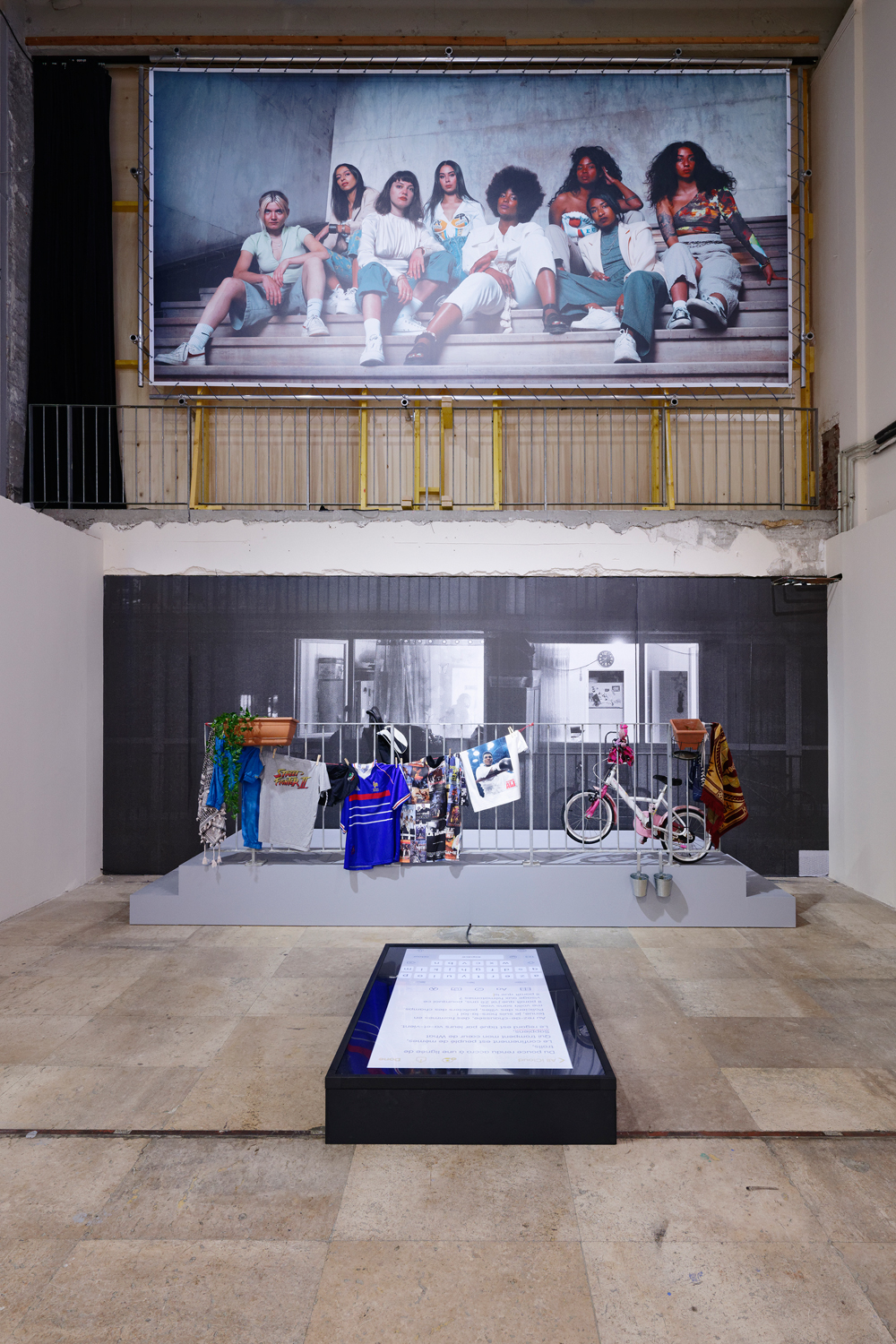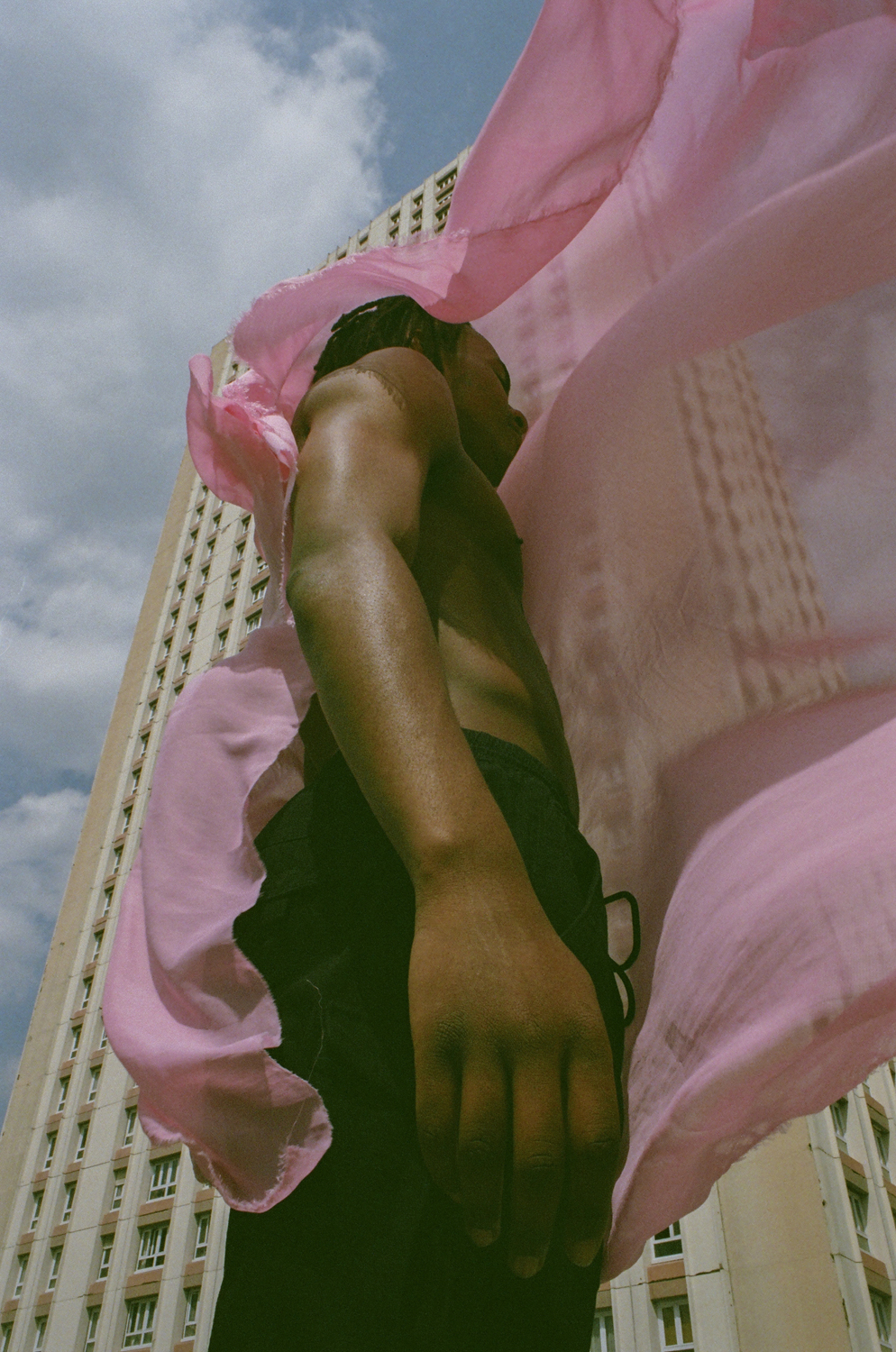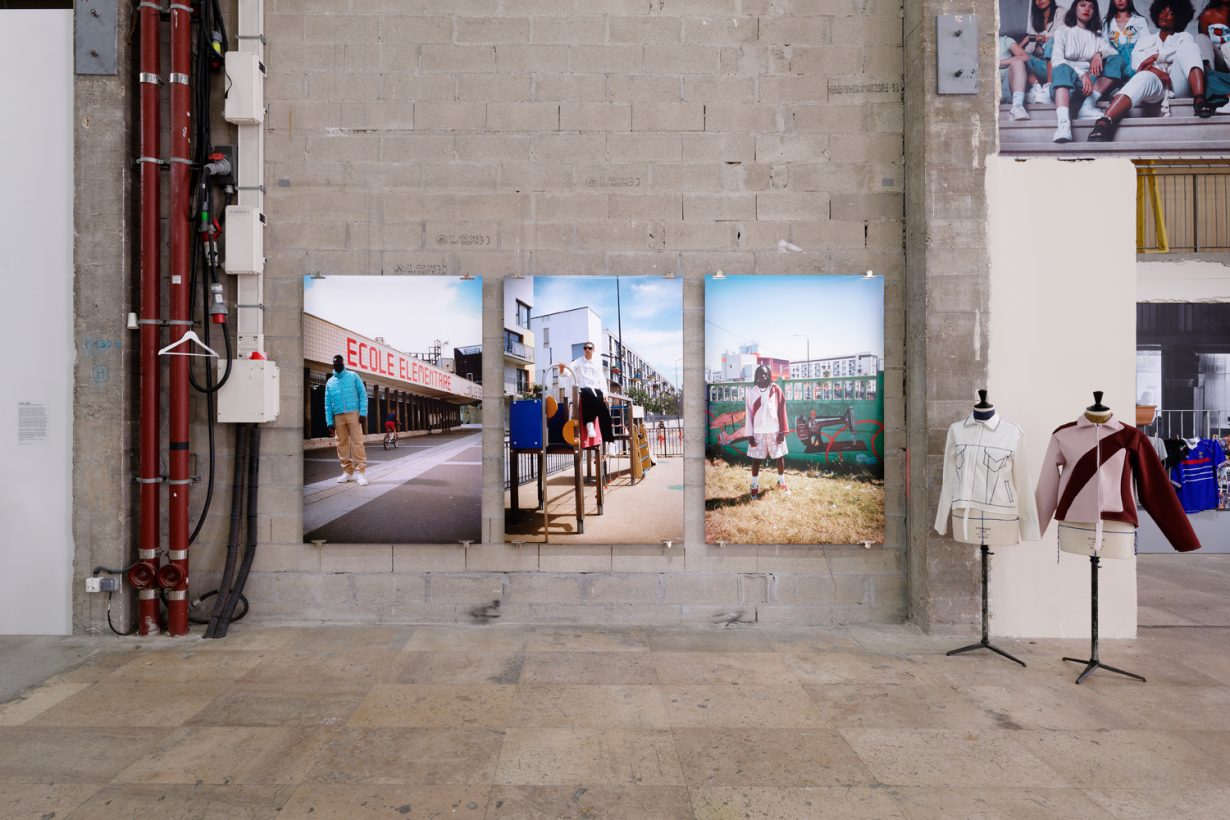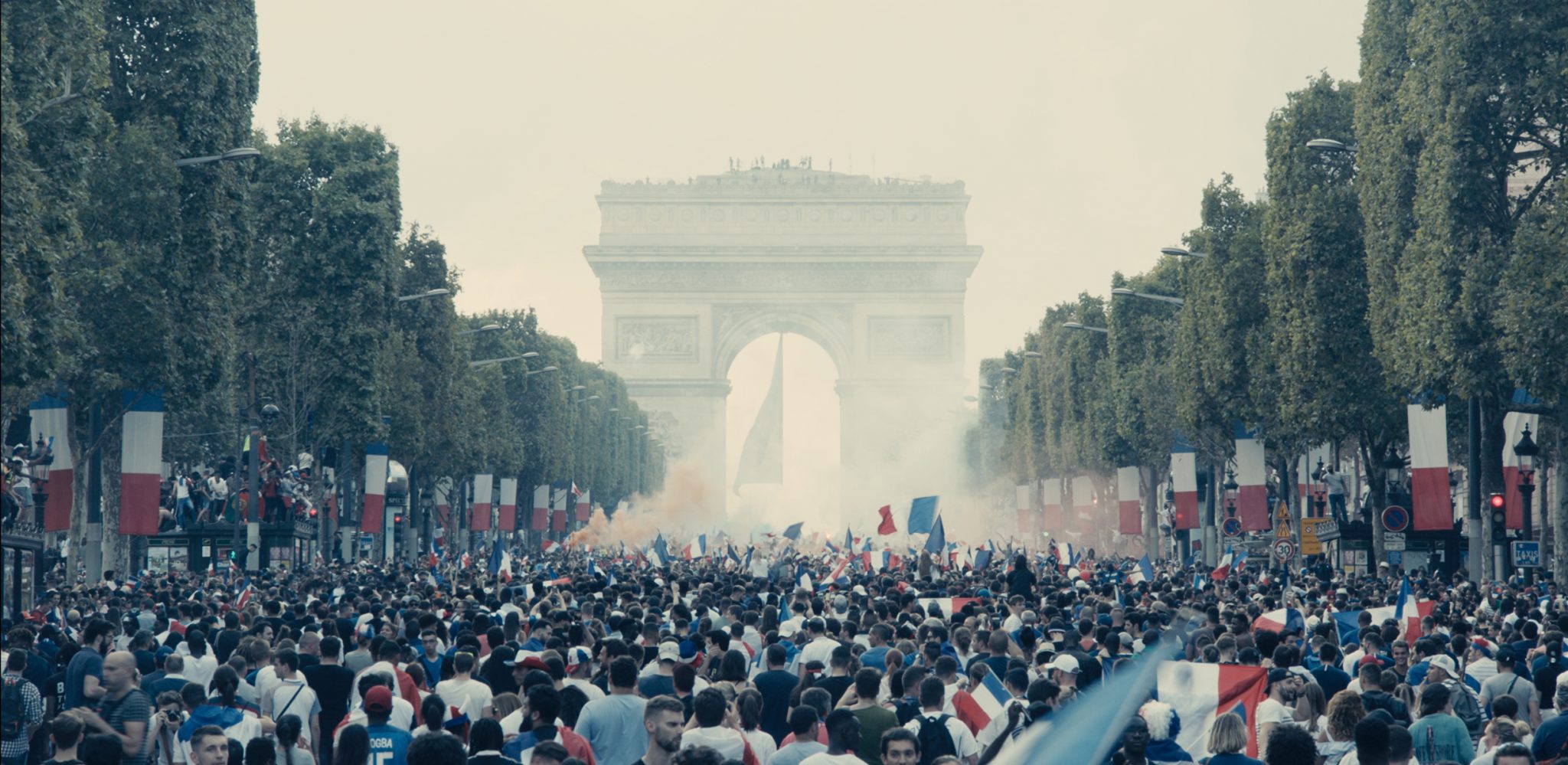How the Kourtrajmé School is effecting deep change within France’s elitist art school system
In 1995 Mathieu Kassovitz released La Haine in French cinemas, awakening audiences to life in the banlieues of Paris by portraying the violence and alienation fostered in what were once visions of utopian living but had become social-housing ghettos. “It’s about a society on its way down,” says one of the film’s characters, played by a young Vincent Cassel, “and as it falls, it keeps telling itself: ‘So far, so good… So far, so good… So far, so good.’ It’s not how you fall that matters. It’s how you land.” If the film landed pretty well, garnering international acclaim, the society it depicted did not: ten years later the banlieues exploded in some of the country’s biggest and most violent riots.
A quarter-century since La Haine, the banlieues are still on their way down: Les Misérables, a 2019 film by Ladj Ly that won the Jury Prize at Cannes and then four Césars, including Best Picture, was a punch-in-the-face reminder that nothing has changed. A modern retelling of Victor Hugo’s greatest tragedy, the film opens with ‘republican’ scenes of crowds from all backgrounds waving the tricolour flag and singing La Marseillaise following France’s victory in the 2018 World Cup, and closes to blazing shots of an escalating confrontation between young banlieusards and police forces. What happens in between is like a slow-motion car crash, revealing the failures of a society to look after all its citizens and of a dead-end system in which both the Jean Valjeans and Javerts inevitably lose out.

Photo: Aurélien Mole. Courtesy the artist and Palais de Tokyo, Paris
Yet at the heart of Ly’s film is a drone owned by one of the kids living in the estates that captures a police blunder on video, offering hope that the officers will be held accountable and signalling perhaps one thing that has changed (beyond the fact that, unlike Kassovitz, Ly is actually from the banlieues): the widespread access to image technology and representation, and its potential to check abuses of power. Testimony to that is the incursion of those realities into the confines of the artworld: at the end of August, endless queues formed outside the Palais de Tokyo in Paris to see the exhibition Jusqu’ici tout va bien, titled in reference to Cassel’s line in La Haine and featuring work by students of the École Kourtrajmé, a free alternative art and moving-image school founded by Ly in 2018. As a training exercise, the students worked for two months with the institution to produce a full-blown exhibition – of works ranging from largescale installations to minute drawings, from photography and short films to paintings – that engages with the energy running through both La Haine and Les Misérables while offering a new, complex portrait of the banlieues.
Newly minted signifiers populate the show, conjuring (and celebrating) the culture of the banlieues: a set of Monobloc chairs, possibly the most common type of urban furniture, have been covered in concrete by Ismail Alaoui Fdili to evoke time spent trapped in the brutalist environment, where waiting has become something of a sport notably for local ‘cop watchers’. The police car, another staple of the banlieue, hangs irreverently overhead as a colourful piñata. A lifesize balcony, part of an installation by Tiah Mbathio Beye, invites viewers to step up and become neighbours, observers and witnesses. Ismaël Bazri’s assemblages of motocross-bike parts, displaying photographs of local ‘rodeo riders’ mounted on these bikes and in action on the streets, stand like shrines to the thrilling and deadly sports of the suburbs. Other works, meanwhile, move beyond symbols to challenge expectations around the representation of this milieu. A series of 12 photographs by Tassiana Aït Tahar, each accompanied by recorded testimonials accessible via QR code, offer unusual scenes of suburban life – an improvised hair salon in the streets, a youth straddling a beautiful white horse in the middle of an estate, another one performing a head spin in the entrance of a building – in an aesthetic reminiscent of Mohamed Bourouissa’s portraits of banlieusards.

Courtesy the artist and Palais de Tokyo, Paris
Addressing the lack of female representation in the context of the suburbs and more specifically in La Haine, Emilie Pria imagines what the bedroom of one of the protagonists’ sisters would have looked like. The sensual photographs of Nouta Kiaie, staging ambiguous bodies enveloped in a pink veil, suggest that questions of gender in a very codified culture might be evolving. More striking, perhaps, is Djiby Kebe’s series of fashion photographs, for which he asked Virgil Abloh to lend some of his creations for Louis Vuitton; Kebe then asked some fashion students to create replicas, and got friends from the banlieue to pose in them against the backdrop of rundown estates, the extremely attractive photographs attesting to (and reversing) the appropriation and commodification of ‘street culture’ by high-end fashion brands.

Courtesy the artist and Palais de Tokyo, Paris
That Kebe was able to have Abloh collaborate says much about the fame of the school, and its ethos: based in Montfermeil, the very suburb where Les Misérables (both the novel and the film) and the 2005 riots took place, its strength and competitiveness lies in its extensive network of guest lecturers, who teach, produce and propel its students into artistic and professional careers (these have included filmmakers such as Spike Lee, George Lucas and Kassovitz himself). Run by Ly together with the artist JR and the actress Ludivine Sagnier, who actively build and maintain the aforesaid network, the school also benefits from the artist collective Kourtrajmé that inspired it, consisting of 130 members from both the banlieues and the bourgeoisie who work across the fields of photography, video, music and film – essentially reproducing the alumni system of elite art schools but making it accessible to the many.
The cult following of La Haine and the one promised for Les Misérables, along with the popularity of the Palais de Tokyo show, are reminders of the power of representation to change perceptions and feed a more complex understanding of reality. That it was 25 years before an ‘heir’ to La Haine appeared hints at the fact that the urgent task might not lie with representation itself, but rather with democratising the means to create it and offering alternative routes to visibility. With a new school just opened in Marseille and another promised in Dakar, Ly and his disciples might well be on the way to changing that.
